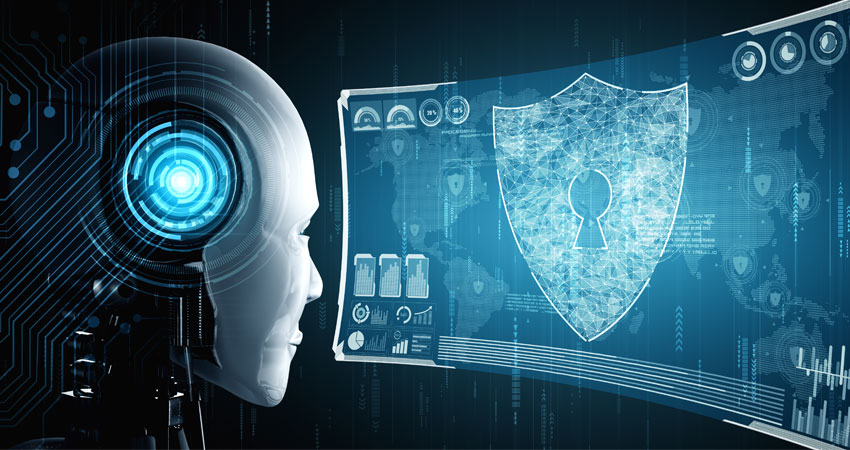The use of AI in cybersecurity has only increased over time. Improved cybersecurity and the prevention of future assaults are possible outcomes of AI in cybersecurity, but the field also faces new challenges.
Here, we’ll discuss ten problems that might arise from AI being exploited in hacking and provide ten solutions to those problems.
Threats:
The threats presented by AI are becoming more critical for businesses. Attacks using AI are becoming more complex and difficult to counter. Attackers may use AI systems to automate social engineering techniques, making it easier to trick targets into providing critical information.
Hackers may trick AI in cybersecurity into making bad decisions by fabricating fake dangers. For example, an asymmetrical attack might trick an AI-based breach detection system into overlooking violent behaviour.
When hackers tamper with the data used to train AI systems, a phenomenon known as “data poisoning” may occur, leading to the system’s biased or erroneous decision-making. For instance, a threat actor might deliberately mislead a malware detection system that uses artificial intelligence. This might cause the system to identify safe files as potentially dangerous incorrectly.
If AI in cybersecurity makes decisions without enough accurate information, their findings might be unfair or wrong. If the data used to train the AI is inherently biased, employers might exploit it to discriminate against people of different races or genders.
With the help of AI in cybersecurity, cybercriminals may design new malware that is harder to detect and eradicate. Hackers might use AI. For instance, cybercriminals may use AI to replicate current software with malicious modifications. It may be simple for these variations to modify their code to avoid detection by standard security measures.
Deepfakes are media-like pictures or videos fabricated to mislead or affect public opinion. Deepfakes may use any material, not only video or audio. Several options exist in this case. An adversary may develop and send a target a deep fake video purporting to endorse a faulty product or service. The enemy probably produced this movie.
Dishonest workers in a business may utilise AI-powered technology to steal confidential information or create system malfunctions. For instance, an insider may use an AI in cybersecurity data exfiltration tool to steal personal information and thwart standard security measures.
Attackers can hone their social engineering techniques with AI, increasing the possibility that their targets may fall for complex schemes. Cons might be made more accessible with the help of AI technology. A cybercriminal could employ a robot equipped with artificial intelligence to conduct crimes.
Solutions:
Companies may train AI systems to detect and defend against attacks from faulty humans so long as there are examples of attacks in the training data set. For instance, the training process of an AI-based image recognition system might include removing potentially dangerous data samples.
By making the algorithms and decision-making processes behind AI visible and accessible, we achieve algorithmic openness. This method is also referred to as “algorithmic transparency.” This might be useful for businesses looking to root out and eradicate bias in their AI in cybersecurity.
By sharing information about attacks, vulnerabilities, and best practices, businesses can stay ahead of threats fueled by AI in cybersecurity. Companies may take measures such as joining threat intelligence networks or sharing groups. Threat information sharing between businesses is another option.
By keeping AI-powered systems patched and up-to-date, you may lessen the chances of nasty people abusing them. The AI in cybersecurity used by a corporation should constantly be up-to-date with the latest fixes and upgrades. This should be a top focus for all businesses.
Social engineering and other insider threats may be mitigated if workers know the risks of AI in cybersecurity attacks and how to defend themselves. One strategy for accomplishing this objective is educating workers on the dangers hackers pose. It is becoming more common for businesses to test their staff’s cybersecurity knowledge with simulated hacking attacks and provide defensive training.
Businesses and organisations can only create and implement AI-powered security solutions with societally agreed-upon norms and regulatory frameworks. These establishments need building. This strategy has the potential to promote the creation and deployment of AI tools that are more fair and ethical.
To guarantee that AI in cybersecurity complies with privacy, data security, and ethical requirements, businesses should work with relevant government entities. Companies may then monitor the correct deployment of AI-powered safety tools. This verification process has to keep data security requirements in mind.
Conclusion
In conclusion, AI in cybersecurity has multiple threats and disadvantages. With the rise of AI-powered security solutions, previously unimaginable threats like data poisoning, brutal attacks, and AI-powered attacks are now within reach. There are multiple solutions to prevent cyber-attack with AI in cybersecurity.
